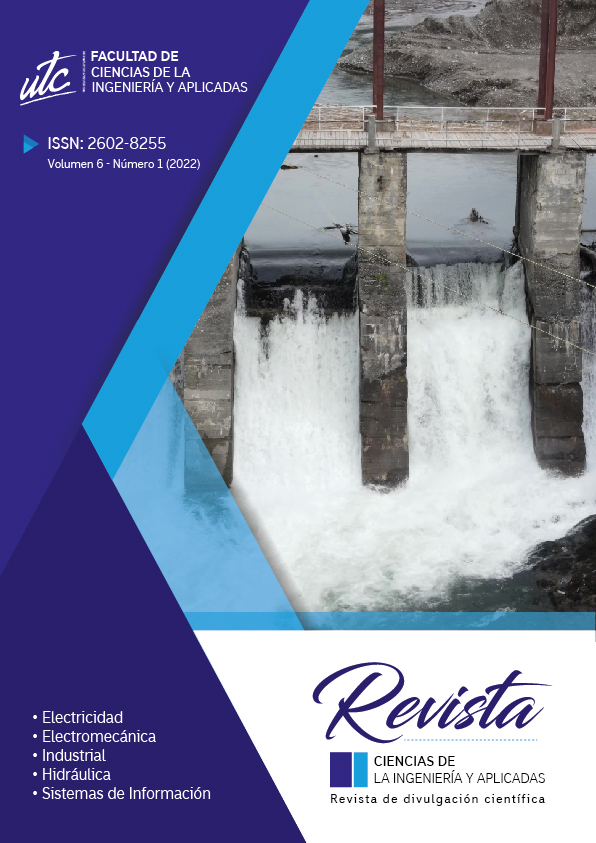Dynamic web portal to prevent f06.4 morbidity in times of Covid-19 pandemic
Abstract
A pandemic is being experienced by the COVID19 virus that is affecting the lifestyle of most people, one of the most common recommendations of the authorities is to stay at home and avoid meetings with friends or family, but it is known that the human being by nature is a sociable being, so this has caused a growth in stress and anxiety in people harming mental health, quality of sleep and physical health causing problems in the quality of life of the individual and vulnerability towards the virus, with the development of the dynamic web portal seeks to prevent the morbidity of mental illnesses through podcast content, relaxation therapies through controlled breathing, positive news and a record of emotional state, the results obtained was a decrease in stress in a short term by the participants who collaborated in the study.
Downloads
References
R. Alarcón, “Perspectivas éticas en el manejo de la pandemia,” Revista de Neuro-Psiquiatria, vol. 83, no. 2, pp. 97–103, 2020.
M. Lluch, “Decálogos de Salud Mental Positiva adaptados a diferentes situaciones y/o personas afectadas por circunstancias de la pandemia de Coronavirus COVID-19,” 2020.
J. Huarcaya, “Mental health considerations about the COVID-19 pandemic,” Revista Peruana de Medicina Experimental y Salud Publica, vol. 37, no. 2, pp. 327–334, 2020.
Y. Vázquez, “COVID-19 Controla la ansiedad y el miedo,” 2020. https://redi.upr.edu/handle/11722/2425
A. Lozano, “Impacto de la epidemia del Coronavirus (COVID-19) en la salud mental del personal de salud y en la población general de China,” Revista de Neuro-Psiquiatria, vol. 83, no. 1, pp. 51–56, 2020.
A. Omary, “COVID-19: The Mental Health Project Ahead,” 2020.
OMS, “Doing What Matters in Times of Stress,” 2020. https://www.who.int/publications/i/item/9789240003927
N. Ozamiz, M. Dosil, M. Picaza, and N. Idoiaga, “Stress, anxiety, and depression levels in the initial stage of the COVID-19 outbreak in a population sample in the northern Spain,” Cadernos de Saude Publica, vol. 36, no. 4, 2020.
A. Retolaza, “La Salud Mental tras el COVID-19: Prevenir y Cuidar,” 2020.
D. Valarezo, V. Sarzosa, and G. Restrepo, “COVID-19 and Mental Health,” Bionatura, vol. 5, no. 2, pp. 1170–1172, 2020.
Z. Liang, O. Tatha, and L. Andersen, “Developing mHealth App for Tracking Academic Stress and Physiological Reactions to Stress,” in LifeTech 2020 - 2020 IEEE 2nd Global Conference on Life Sciences and Technologies, 2020, pp. 147–150.
J. Márquez, “Teleconsultation in a pandemic due to coronavirus: Challenges for telemedicine in the post-COVID-19 era,” Revista Colombiana de Gastroenterologia, vol. 35, no. Supl. 1, pp. 5–16, 2020.
D. Luxton, R. Mccann, N. Bush, M. Mishkind, and G. Reger, “mHealth for Mental Health: Integrating Smartphone Technology in Behavioral Healthcare,” Professional Psychology: Research and Practice, vol. 42, no. 6, pp. 505–512, 2011.
M. Varnfield, K. Rajesh, C. Redd, S. Gibson, L. Gwillim, and S. Polkinghorne, “Health-e Minds: A Participatory Personalised and Gamified mHealth Platform to Support Healthy Living Behaviours for People with Mental Illness,” in Proceedings of the Annual International Conference of the IEEE Engineering in Medicine and Biology Society, EMBS, 2019, vol. 2019, pp. 6943–6947.
S. Thach, “A qualitative analysis of user reviews on mental health apps: Who used it? For what? And why?,” in RIVF 2019 - Proceedings: 2019 IEEE-RIVF International Conference on Computing and Communication Technologies, 2019, pp. 1–4.
S. Allen, “Artificial Intelligence and the Future of Psychiatry,” IEEE Pulse, vol. 11, no. 3, pp. 2–6, 2020.
K. Cavanagh and D. Shapiro, “Computer Treatment for Common Mental Health Problems,” Journal of Clinical Psychology, vol. 60, no. 3, pp. 239–251, 2004.
A. K. Tripathy, A. G. Mohapatra, S. P. Mohanty, E. Kougianos, A. M. Joshi, and G. Das, “EasyBand: A Wearable for Safety-Aware Mobility during Pandemic Outbreak,” IEEE Consumer Electronics Magazine, vol. 9, no. 5, pp. 57–61, 2020.
Copyright (c) 2022 Ciencias de la Ingeniería y Aplicadas

This work is licensed under a Creative Commons Attribution-NonCommercial-NoDerivatives 4.0 International License.
The authors who publish in this journal agree to the following terms:
- Creative Commons Attribution-NonCommercial-NoDerivatives License allows others to share the work with acknowledgment of authorship of the work and initial publication in this journal.
- Authors may separately establish additional agreements for the non-exclusive distribution of the version of the work published in the journal (for example, placing it in an institutional repository or publishing it in a book), with an acknowledgment of its initial publication in this journal.
- Authors are permitted and encouraged to disseminate their work electronically (for example, in institutional repositories or on their own website) before and during the submission process, as it can lead to productive exchanges, as well as further citation. earliest and largest of published works (See The Effect of Open Access) (in English).











